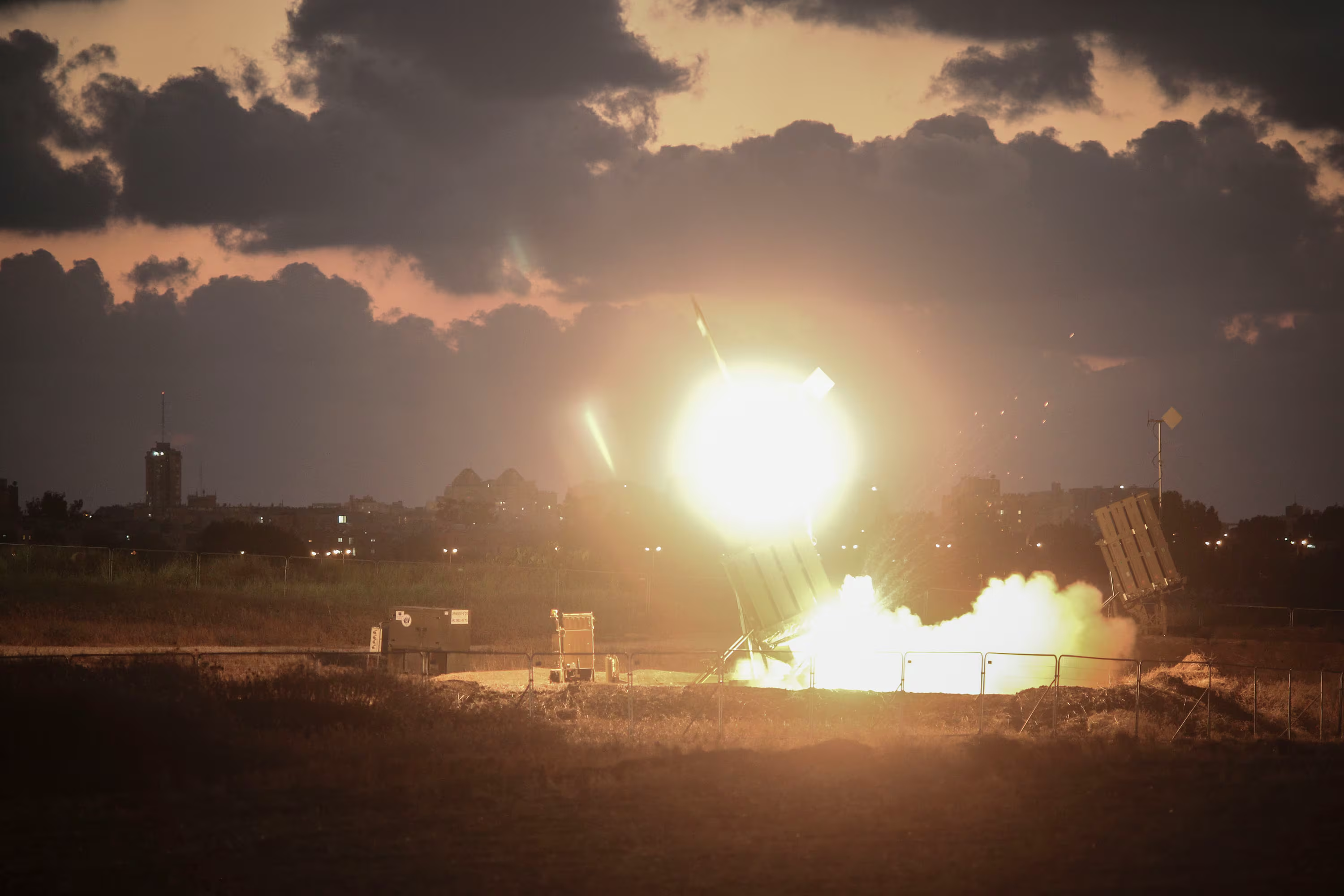WASHINGTON — The U.S. Army plans to conduct a shoot-off to evaluate the best options for a future indirect fires protection capability to defend against rockets, artillery and mortars as well as cruise missile and drones, according to a report sent to Congress and obtained by Defense News.
The shoot-off that will take place at White Sands Missile Range, New Mexico, is fashioned much in the same way the Army recently conducted its “sense-off” to choose a new air and missile defense radar that will replace the sensor in the Army’s current Patriot system, Brig. Gen. Brian Gibson, who is in charge of the Army’s air and missile defense modernization effort, told Defense News in a March 9 interview.
The Army has been trying to formulate its enduring Indirect Fires Protection Capability Increment 2 (IFPC Inc 2) system for several years. It purchased two Iron Dome batteries, produced through a partnership between Rafael and Raytheon, to serve as an interim solution for cruise missile defense. The acquisition was congressionally mandated. Those batteries will be delivered by the end of the year, Gibson said.
The enduring system will defeat subsonic cruise missiles with an objective requirement to defeat supersonic variants as well as group two and three UAS and RAM threats, according to the report. The Army’s Sentinel A3 and future A4 version will serve as the radar for IFPC, and its command-and-control system will be the Integrated Air and Missile Defense Battle Command System, or IBCS, which is also the brains for the Army’s future Integrated Air and Missile Defense system that will replace Patriot.
The intention for IFPC is to protect critical fixed or semi-fixed assets and is intended to be a more mobile solution than one that would suffice at a forward operating base, Gibson described, and it will fill in gaps between tactical short-range air defense and strategic air and missile defense such as the Patriot and the Terminal High Altitude Area Defense System.
RELATED

The Army’s analysis, according to the report, included looking at solutions both from the Israel Missile Defense Organization and from U.S. industry. It determined, when considering integration with IBCS and Sentinel as well as the possible schedule, that risks exist for both the U.S. and Israeli solutions.
“Given the assessed risks with the potential enduring IFCP Inc 2 solutions, the Army requires additional performance data against IFPC Inc 2 threats,” the report stated. “The Army will use a competitive process consisting of two phases to reduce program risk, while considering cost and schedule parameters.”
In the first phase, industry will participate in a shoot-off demonstration using proposed launcher and interceptor solutions integrated into IBCS and Sentinel.
IBCS is entering a limited-user test in May after struggling through a previous limited-user test several years ago. The system has been delayed for various reasons and likely won’t reach initial operational capability until the third quarter of fiscal 2022.
Sentinel A4 is also not operational, so the shoot-off will use the less capable A3 variant.
Following the shoot-off, the Army will evaluate proposals and data from the event, analyzing digital simulation data to make a “Best Value determination” to pick one vendor to move forward, according to the report.
The shoot-off is planned for the third quarter of FY21. The Army aims to deliver initial capabilities by FY23.
To make a determination on the way forward, the Army conducted analysis for an enduring IFPC solution in FY19 to include taking technical data from its Expanded Mission Area Missile program of candidate interceptors.
The verification phase evaluated Raytheon’s Low-Cost Active Seeker as well as its SkyHunter interceptor (the U.S. variant of Rafael’s Tamir missile used in Iron Dome) and Lockheed Martin’s Miniature Hit-to-Kill missile. All three of the interceptors were characterized as possible candidates for an IFPC interceptor.
The Army originally planned to develop and field its own multimission launcher as part of the enduring IFPC solution but canceled that program in favor of finding a more technologically mature launcher.
The service evaluated whitepapers for IFPC launchers and determined that those proposed required further development, prototyping and integration work to be used as a dedicated IFPC component, according to the report.
The analysis also found the Iron Dome launcher and Tamir interceptor’s performance “is highly reliant” on its own battle management system and multimission radar, and the report determined that “for Iron Dome’s launcher and Tamir interceptors to be a viable option for Enduring IFPC Inc 2, the [battle management and weapons control] and [multimission radar] functions require transferring into the Army’s IBCS.”
And current data provided from the Israeli organization has not included component-level models such as the missile seeker, missile guidance and control, and missile fusing needed to verify that the launcher and missile would work with IBCS, the report stated.
“The tightly coupled nature of Iron Dome components within the Iron Dome architecture and a lack of sufficient technical data requires further development, prototyping and integration in order to provide a potential Enduring IFPC Inc 2 capability,” the report noted.
Through analysis, the service determined that the U.S.-based Expanded Mission Area Missile candidates met range and maneuverability requirements and would be able to tie into Sentinel A3 by FY23 and A4 by FY25.
The Tamir interceptor’s performance data proves its effectiveness when used within the Iron Dome system, but since data is lacking, it’s uncertain how well it might perform when linked through IBCS to the Sentinel radar. Tamir, however, is likely to perform similarly to the LCAS missile, according to the report.
While analysis shows that the interceptors are “likely” to meet enduring requirements, the shoot-off demonstration will “increase the Army’s confidence in interceptor performance within the AIAMD architecture,” the report states.
Jen Judson is an award-winning journalist covering land warfare for Defense News. She has also worked for Politico and Inside Defense. She holds a Master of Science degree in journalism from Boston University and a Bachelor of Arts degree from Kenyon College.





